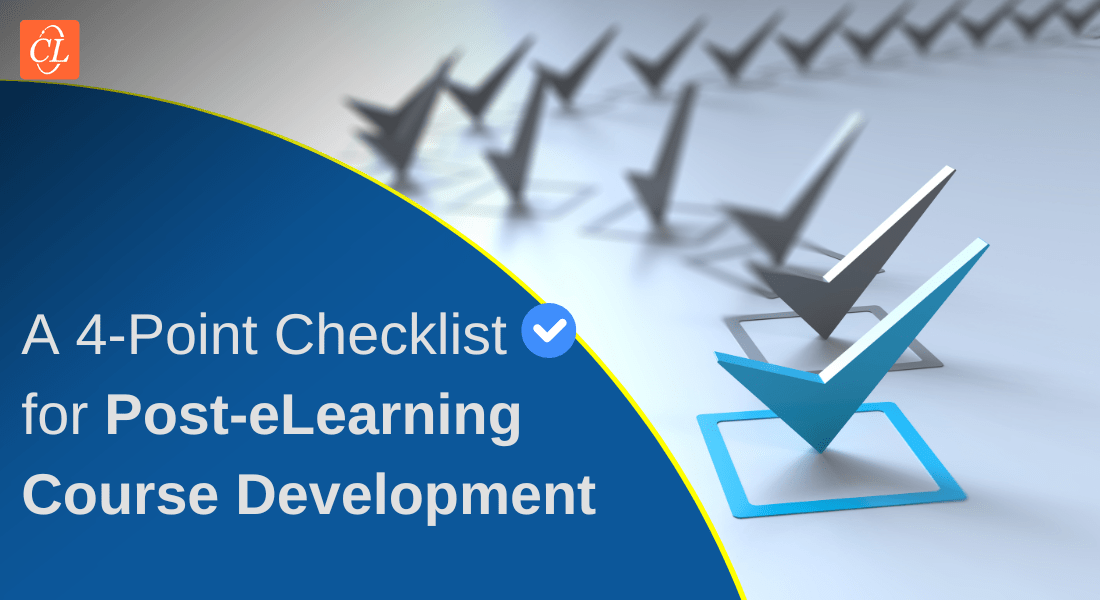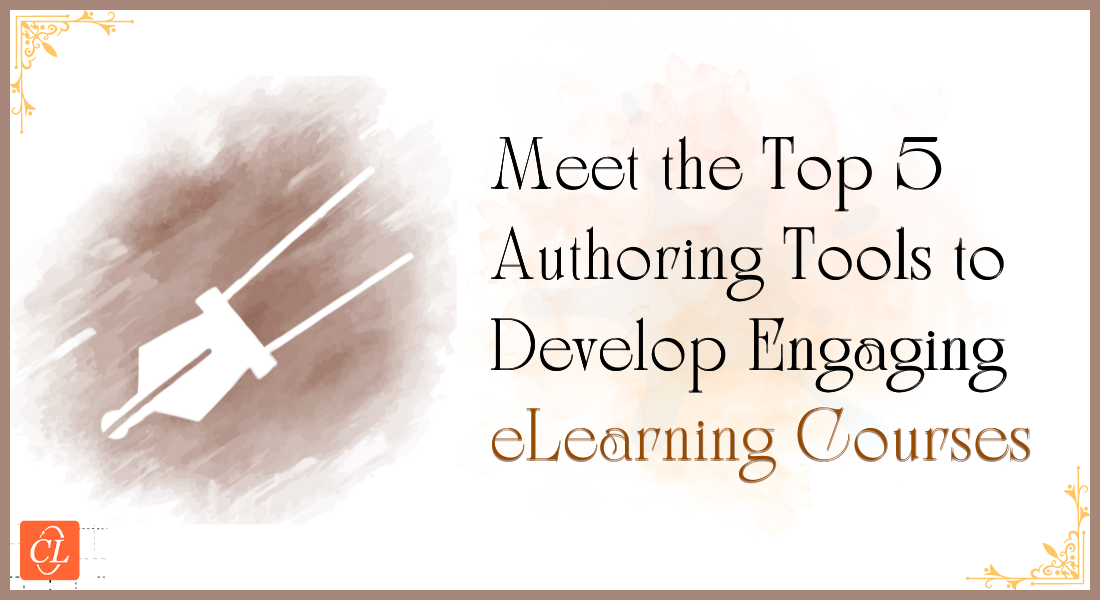A 4-Point Checklist for Post eLearning Course Development

Learning is an ongoing process; so is the process of designing an eLearning course. So, it would be a huge mistake to consider your work done after the first cycle of eLearning course/ module development. Completing the development of an eLearning course should not mean that you can leave it there and proceed to the next project.
But if you can’t consider your work finished after completion, then what should be the next step? Well, here is a post-completion checklist that you should follow to make sure that your eLearning course stays relevant. It will guide you on what to do next –
High-Performance eLearning Modules are an Outcome of Continuous Improvement
Here is a checklist to follow for continuous improvement:
- Gauge the Success Rate of Your eLearning Course
- Take Actions Based on Learners’ Feedback
- See Beyond the Feedback
- Encourage more Participation
1. Gauge the Success Rate of Your eLearning Course
You may be very positive and confident about the eLearning course that you have developed. However, this is the stage where you should not let your confidence convince you. Don’t ignore the importance of assessing the effectiveness of the course. No module is perfect. Every course or module has room for improvement or updating. And, you can find this out only when you make honest efforts to measure the success rate of your eLearning course.
Assessment of an eLearning module is a multi-step process. It begins with assessing the learners, includes taking feedback, and ends with analyzing data collected at each stage. While assessing the learners, it becomes easy for you to identify knowledge gaps and the pain points where most or the majority of the employees face difficulty. This way, you will know that a certain topic needs a change in approach to make it more understandable and interesting for the learners. With the feedback, you can see your learning module from the learners’ perspective thus clearly finding the areas needing some change. The use learning analytics can be very useful to evaluate the success rate of your eLearning course. This is one of the best practices adopted by eLearning champions.
Here is how you can be an eLearning champion
2. Take Actions Based on Learners’ Feedback
There’s no point in measuring your success rate or taking learners’ feedback if you don’t take action based on them. No amount of pilot testing can make the eLearning course perfect. So, you need to stay open for any change required based on the feedback of learners. Once you get feedback and suggestions from learners completing the course, you should immediately plan your action steps. These actions will help you improve your online training modules. So, do not hesitate in making even big changes, if required. Sometimes you won’t need to change or update the content but just a little tweaking in the way of presenting the content or the eLearning assessment process. Whatever is the case, taking action based on feedback and assessment is crucial.
3. See Beyond the Feedback
Taking action on the feedback and the learning assessment results may seem a no-brainer; but seeing beyond the feedback may not come to your mind naturally. However, it is important for you to do so, especially for your eLearning courses. The rapidly changing technology might bring new opportunities every day but it also requires you to stay on your toes. It won’t be enough to update the learning course based on the feedback; you need to look beyond that.
One of the most frequent issues faced in eLearning modules is the breakage of external links. No good eLearning course is complete without embedded external links. If you don’t keep a constant look, your course flow may get disturbed due to many of those links being dead. You will need to manually check external links periodically to keep your course updated. You will also require to update any current scenario-based learning examples you might have included in your course. An example relevant to one batch of learners may lose its shine for the next batch of learners. This becomes even more imperative in case the world has witnessed any major changes like the COVID pandemic, the Russia-Ukraine war, the global recession, etc. You cannot skip this part as examples are really important for concept development among learners.
4. Encourage more Participation
Once you have updated your course content and style, it’s time to encourage more participation. You do not want your employees to enroll in the offered eLearning course just because they are needed to do so. You want them to join the course enthusiastically. To achieve this goal, you will need to share and celebrate the successes of those employees who have completed the course.
You can award the best performers of the course. This will encourage the awarded employee to do even better at work and next-level courses, if there are any, and also push other employees to join eLearning courses and complete them enthusiastically with the hope of being recognized. You can also share your course success stories and data in your internal newsletters or social media groups of employees if there are any. You can think of any other creative way to celebrate the success of your eLearning courses and employees to attract others to follow the path.
Final Words
The development of an eLearning course is an ongoing process that requires continuous effort. So, you cannot sit and relax after designing an online course or even after claiming its success after a few pilot tests. The pilot tests only indicate that your course is good to go at the particular moment. If you want your course to maintain its relevance you need to keep updating it continuously. In this rapidly changing era of technologies, if you fail to update your course frequently, it will become obsolete in no time.
But before developing the eLearning course, it is important that you have a robust eLearning module at hand. Looking to outsource your eLearning development? This eBook guides you through the whys and hows of outsourcing eLearning design and development.





